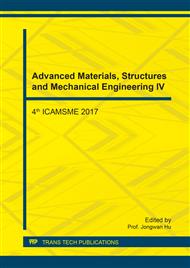p.89
p.95
p.101
p.107
p.112
p.117
p.123
p.131
p.135
Effects of Lithium Salt on Interfacial Reactions between SiC and EC-Based Solutions in Lithium Secondary Batteries
Abstract:
Electrochemical reactions occurring at a SiC electrode were investigated to gain insight into the effects of lithium salts, such as LiPF6, LiClO4, LiCF3SO3, and LiBF4, on the interfacial resistance. Lithium salts were found to exert little effect on the magnitude of the resistance of the solid-electrolyte interphase (SEI). In contrast, the charge-transfer reactions observed in the LiCF3SO3-containing solution exhibited the smallest resistance. Charge-discharge analysis revealed that the nature of the SEI was significantly different from that formed in ethylene carbonate-based solutions containing different lithium salts. The SiC electrode exhibited large discharge capacity and low coulombic efficiency in the LiCF3SO3-containing solution. This might be closely related to the smallest charge-transfer resistance.
Info:
Periodical:
Pages:
112-116
Citation:
Online since:
November 2017
Authors:
Price:
Сopyright:
© 2017 Trans Tech Publications Ltd. All Rights Reserved
Share:
Citation:


